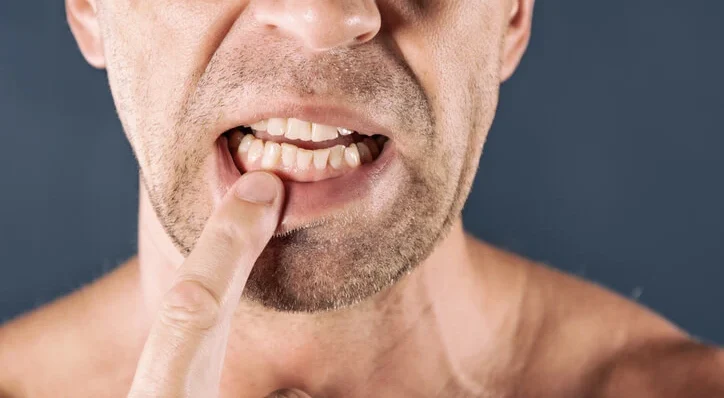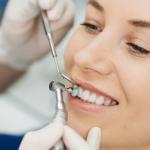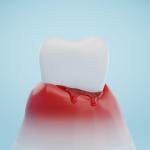Gum pain, also known as gingival pain, can be a discomforting and sometimes alarming experience. The gums, or gingiva, play a crucial role in oral health, providing support to the teeth and protecting underlying bone structures. When gum pain arises, it can indicate various underlying issues, ranging from minor irritation to more serious conditions requiring professional intervention. In this comprehensive guide, we will explore the causes, symptoms, and treatment options for gum pain, empowering you with knowledge to better manage your oral health.
Understanding Gum Pain
Gum pain can manifest in different forms, including soreness, tenderness, swelling, and bleeding. It may affect a specific area of the gums or spread throughout the mouth. While occasional gum discomfort can be normal, persistent or severe pain warrants attention as it may signal an underlying problem.
Common Causes of Gum Pain
- Gingivitis
- Periodontitis
- Poor Oral Hygiene
- Gum Infections
- Trauma
- Dental Procedures
- Gum Recession
- Hormonal Changes
- Medical Conditions
Gingivitis
Gingivitis is the earliest stage of gum disease, characterized by inflammation of the gums due to plaque buildup along the gumline. Symptoms include swollen, red, and tender gums, as well as bleeding during brushing or flossing.
Periodontitis
If left untreated, gingivitis can progress to periodontitis, a more severe form of gum disease. Periodontitis involves the destruction of the gum tissue and underlying bone, leading to symptoms such as receding gums, persistent bad breath, loose teeth, and gum abscesses.
Poor Oral Hygiene
Inadequate oral hygiene practices, such as infrequent brushing and flossing, can result in the accumulation of plaque and tartar, leading to gum inflammation and pain.
Gum Infections
Bacterial or fungal infections can affect the gums, causing pain, swelling, and pus formation. Common infections include gingival abscesses and oral thrush.
Trauma
Accidental injuries to the gums, such as biting down on a hard object or experiencing a blow to the face, can cause gum pain and discomfort.
Dental Procedures
Certain dental treatments, such as deep cleanings, root canal therapy, and tooth extractions, may cause temporary gum pain and sensitivity as the tissues heal.
Gum Recession
Receding gums, often caused by gum disease or aggressive brushing, can expose the sensitive root surfaces of the teeth, leading to pain and increased susceptibility to decay.
Hormonal Changes
Hormonal fluctuations, such as those occurring during pregnancy or menopause, can contribute to gum sensitivity and inflammation, commonly known as pregnancy gingivitis or menopausal gingivostomatitis.
Medical Conditions
Systemic conditions like diabetes, autoimmune diseases, and vitamin deficiencies can impact oral health and contribute to gum pain and inflammation.
Symptoms of Gum Pain
Recognizing the symptoms associated with gum pain is essential for early intervention and treatment. These symptoms may include:
- Persistent or recurrent gum soreness and tenderness
- Swollen, red, or inflamed gums
- Bleeding gums, especially during brushing or flossing
- Gum recession or tooth sensitivity
- Pus or discharge around the gums
- Bad breath or a foul taste in the mouth
- Loose or shifting teeth
- Difficulty chewing or biting
Diagnosis
When experiencing gum pain, seeking prompt dental evaluation is crucial to determine the underlying cause and appropriate treatment. The dentist will perform a comprehensive examination of the oral cavity, including the gums, teeth, and supporting structures. Diagnostic tests such as dental X-rays or periodontal probing may be necessary to assess the extent of gum disease or other conditions.
Treatment Options
Treatment for gum pain depends on the underlying cause and severity of the condition. Common interventions may include:
- Improved Oral Hygiene
- Professional Cleanings
- Gum Disease Therapy
- Medications
- Lifestyle Modifications
- Dental Restorations
- Orthodontic Treatment
- Management of Systemic Conditions
Improved Oral Hygiene
Practicing good oral hygiene habits, including regular brushing, flossing, and using antimicrobial mouthwash, can help prevent and alleviate gum pain associated with plaque and bacteria buildup.
Professional Cleanings
Professional dental cleanings, performed by a dental hygienist or dentist, remove plaque, tartar, and bacteria from the teeth and gums, reducing inflammation and promoting gum health.
Gum Disease Therapy
For individuals with gingivitis or periodontitis, gum disease therapy may be recommended, which may include scaling and root planing (deep cleaning), antibiotic therapy, or surgical procedures to remove diseased tissue and promote gum regeneration.
Medications
Depending on the specific condition, the dentist may prescribe antibiotics, antifungal medications, or pain relievers to manage gum infections, inflammation, or discomfort.
Lifestyle Modifications
Making lifestyle changes such as quitting smoking, reducing alcohol consumption, and adopting a balanced diet rich in fruits, vegetables, and whole grains can support gum health and overall well-being.
Dental Restorations
In cases of gum recession or tooth damage, dental restorations such as fillings, crowns, or bridges may be recommended to restore function and aesthetics while protecting the underlying gums and teeth.
Orthodontic Treatment
Malocclusion (misalignment of the teeth) can contribute to gum pain and inflammation. Orthodontic interventions such as braces or clear aligners may be prescribed to correct alignment issues and alleviate gum discomfort.
Management of Systemic Conditions
Individuals with underlying medical conditions contributing to gum pain, such as diabetes or autoimmune diseases, should work closely with their healthcare providers to manage their conditions effectively and minimize oral health complications.
When to Seek Professional Help
If you experience persistent or severe gum pain, swelling, bleeding, or other concerning symptoms, it’s essential to seek prompt dental evaluation. Delaying treatment can lead to worsening of the condition and potential complications, including tooth loss and systemic health problems.
Preventing Gum Pain
Prevention is key to maintaining optimal gum health and preventing gum pain. Here are some tips to help prevent gum-related issues:
- Brush your teeth twice daily using fluoride toothpaste and a soft-bristled toothbrush. Pay attention to proper brushing technique and spend at least two minutes brushing each time.
- Floss daily to remove plaque and debris from between the teeth and along the gumline.
- Rinse with an antimicrobial mouthwash to reduce bacteria and plaque buildup.
- Schedule regular dental check-ups and cleanings every six months or as recommended by your dentist.
- Avoid tobacco products, which can contribute to gum disease and oral cancer.
- Eat a balanced diet rich in vitamins and minerals, and limit sugary and acidic foods and beverages that can harm the teeth and gums.
- Use a mouthguard or nightguard if you grind your teeth or participate in contact sports to protect the gums and teeth from injury.
Conclusion
Gum pain can be indicative of various underlying issues affecting oral health, ranging from minor inflammation to serious gum disease. By understanding the causes, symptoms, and treatment options for gum discomfort, individuals can take proactive steps to maintain optimal gum health and prevent complications. Remember to practice good oral hygiene, seek regular dental care, and promptly address any signs of gum discomfort to preserve your smile and overall well-being.





